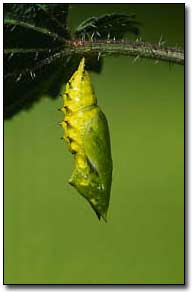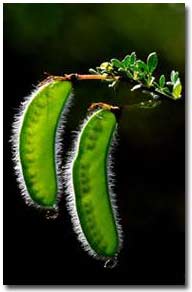|
Without doubt there is something awe inspiring and wholesome in the big view. Every
year there are vast arrays of calendars all full of pretty landscape pictures
adorning our high street shops. Many we can relate to and one day would like to see
for ourselves. Indeed, we are fortunate in this country to be blessed with such
wonderfully diverse scenery. From the wide open spaces of the fens to the rugged
mountains of Cumbria, Wales and Scotland. From rolling meadows to dramatic
coastlines they all have an important part to play. However, sometimes with such a
grand vista it is difficult to fully appreciate its beauty simply because there is
nowhere for the eye to settle, no point on which to concentrate. There is just too
much to take in. It is just so overwhelming.
However, if we take a fresh approach and look hard for a moment at just part of this
scene we begin to see and appreciate the finer features of the individual pieces of
the landscape. Look at how they combine, fitting together like the pieces of a large
 jigsaw to make the complete picture. But let us now break it down into its basic
components and take time to contemplate the colors, shapes and textures. We can
then take this notion even further and that distant bright yellow patch becomes, on
closer inspection, a rich and riotous stand of Broom. If we move closer still to the
broom we see clearly the perfection and intricate detail in each flower and seedpod.
Look even closer at the seedpod with its gossamer covering of fine hairs, each one
an individual but reliant on its close neighbors and we can begin to understand how
things fit together. Whilst this may not be a scientific approach it provides a raw
and basic understanding, offers enlightenment and makes us feel an integral part of
nature. So by isolating and concentrating on a small part of the whole we have
simplified the subject. Made it more memorable, more basic and more powerful.
jigsaw to make the complete picture. But let us now break it down into its basic
components and take time to contemplate the colors, shapes and textures. We can
then take this notion even further and that distant bright yellow patch becomes, on
closer inspection, a rich and riotous stand of Broom. If we move closer still to the
broom we see clearly the perfection and intricate detail in each flower and seedpod.
Look even closer at the seedpod with its gossamer covering of fine hairs, each one
an individual but reliant on its close neighbors and we can begin to understand how
things fit together. Whilst this may not be a scientific approach it provides a raw
and basic understanding, offers enlightenment and makes us feel an integral part of
nature. So by isolating and concentrating on a small part of the whole we have
simplified the subject. Made it more memorable, more basic and more powerful.
We have now entered the world of close ups in nature, a world that lies just beyond
the familiar that is so full of rich detail and striking beauty. With an open mind,
a little imagination and an almost childlike curiosity there are many more subjects
for us to consider. There is certainly no need to go far. Indeed finding close ups
in nature should be seen as more of a soul searching journey, a journey of inner
vision and contemplation rather than a journey to some far off place. Furthermore,
the deeper we delve the more fascinating and rewarding they become. They reveal
their hidden treasures without hesitation allowing us time to reflect and admire
their majesty. With this awareness the nature photographer is indeed privileged.
With this attention to detail it becomes easier to understand that the whole is
clearly made up of many individual parts that are all unique. All these parts
inter-relate with each other and no doubt they all have a vital role to play.
 Indeed, it is only by appreciating the importance of the smallest parts of our
planet that I believe we can start to make any sense of nature as a whole. There is
also emotion and drama to be found in these little cameos that we so often overlook,
it may be something as simple as a single delicate flower growing in a boulder
crevice. Hanging on and defiant, its tenuous grip on life is totally dependent on
the sustenance that it draws from the debris residing in the crevice. Yet it lives
on year after year, testimony indeed to its determination and resilience. It is this
interrelationship that is so enduring, fundamental and compelling.
Indeed, it is only by appreciating the importance of the smallest parts of our
planet that I believe we can start to make any sense of nature as a whole. There is
also emotion and drama to be found in these little cameos that we so often overlook,
it may be something as simple as a single delicate flower growing in a boulder
crevice. Hanging on and defiant, its tenuous grip on life is totally dependent on
the sustenance that it draws from the debris residing in the crevice. Yet it lives
on year after year, testimony indeed to its determination and resilience. It is this
interrelationship that is so enduring, fundamental and compelling.
As a nature photographer getting close to nature is a very important part of my
life. It allows a far greater appreciation of the beauty and a clearer understanding
of the natural world in which we live. Take for example a clear cold winters day
with crispness so sharp it is breathtaking. When we start to look for close ups in
nature in these conditions we are immediately drawn to magical patterns in the snow,
frosted ivy leaves and shimmering icicles. Ice patterns are one of my favorite
winter subjects as they offer such diversity and literally capture a moment frozen
in time. Some offer gracefully smooth curves whilst others display harsh jagged
lines depending on the prevailing weather conditions. So even something as simple as
a puddle icing over is heavily influenced by its immediate surroundings.
Light quality will also play a significant part in our appreciation of the finer
details of these shapes and textures, if it is too harsh then the increase in
contrast will actually block out the very detail we are trying to see. It is far
better to have the diffused light that occurs with high thin cloud cover. This
provides a much softer light allowing all the detail, texture and nuances to be so
clearly seen. Subject color will also influence our interpretation of the subject,
for example vibrant colors like reds and yellows suggest dominance and power,
whereas muted shades like grey and browns portray more tranquil, earthy and basic
feelings.
Early morning is often a fine time to appreciate a wide range of subjects and a
stroll in the garden will pay dividends. Flowers and grasses, for example when
covered with dew or fine rain make fascinating studies, the fine hairs hold onto
droplets of water so that they almost defy gravity. If the conditions are right
there may be insects that have become encrusted with minute droplets of water
following a night's inactivity. Butterflies in particular look stunning covered in
dew as it makes them sparkle as though covered with a myriad of jewels.
So, with renewed vision and childlike wonder the natural world is without doubt a
beautiful place that only requires a little time and an inquisitive mind to fully
appreciate. Satisfaction and contentment can be provided by the simplest of things
and with this comes harmony and hopefully inner peace.
| 
